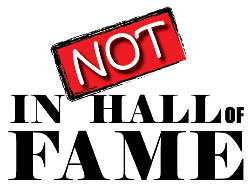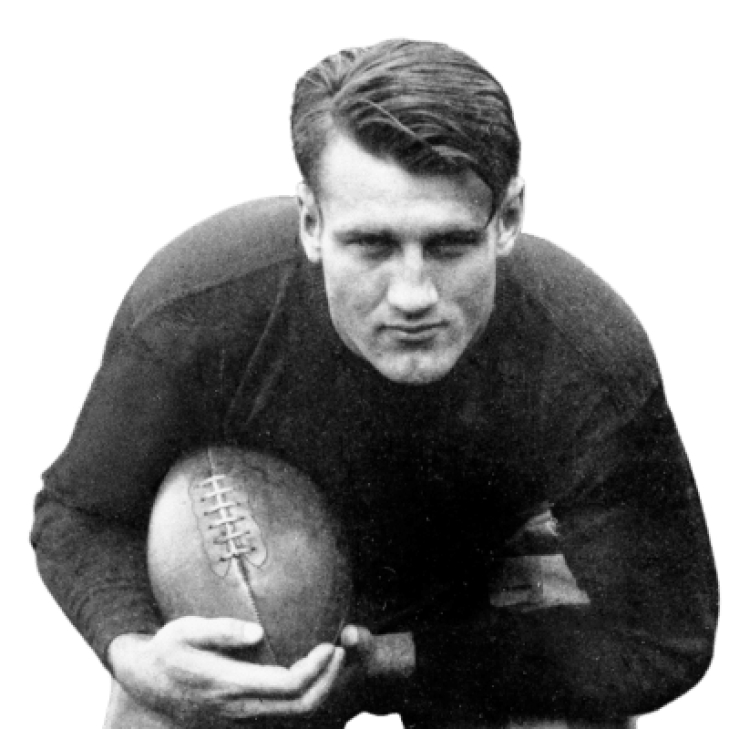The Pro Football Hall of Fame Revisited Project: 1959 FINAL VOTE
1959 Pro Football Hall of Fame Revisited Project Class.
Here we are! Again!!
If you have been following our Pro Football Hall of Fame Revisited Project, you know that we have asked the rhetorical question: What if the PFHOF began in January 1946?
After soliciting and obtaining a passionate group of football fans and historians, we sent out a ballot for a Preliminary Vote, in which we asked each voter to give us 25 names as their semi-finalists and 5 in the Senior Pool. Following that, we asked the group to vote for their 15 Finalists in the Modern Era and 3 in the Senior Category. The final stage was to vote for their five Modern Era inductee and one Senior inductee.
This is the result of the fourteenth official class;
Below are the final results of this project based on 30 votes,
Remember that the group took a vote, and we have reverted back to the top five candidates entering the Hall. This will be put to a vote again in “1960”.
This is for the “Modern Era”
*Bold indicates they have been elected to the Pro Football Hall of Fame Revisited Class of 1959:
|
Player |
Year of Eligibility |
Vote Total |
|
Bill Dudley HB-TB-QB |
1 |
23 |
|
Bill Willis G |
1 |
23 |
|
Arnie Weinmeister DT |
1 |
17 |
|
Mac Speedie E |
2 |
17 |
|
Wayne Millner E |
9 |
12 |
|
Whizzer White TB-HB |
12 |
9 |
|
Marshall Goldberg FB |
6 |
8 |
|
Buckets Goldenberg G-BB |
9 |
7 |
|
Bill Osmanski FB |
7 |
4 |
|
Ken Kavanaugh E |
4 |
4 |
|
George Christensen T-G |
16 |
5 |
|
Ace Gutkowski FB-TB |
15 |
5 |
|
Pat Harder FB |
1 |
4 |
|
Woody Strode E |
5 |
3 |
|
Ward Cuff WB-QB-HB |
7 |
2 |
This is for the “Senior Era”, *Bold indicates they have been elected to the Pro Football Hall of Fame Revisited Class of 1959, though no one made the mandatory 50% threshold to advance.
|
Tony Latone |
4 |
10 |
|
Al Nesser |
2 |
10 |
|
Hunk Anderson |
9 |
8 |
|
None of the Above |
N/A |
2 |
About the 1959 Inductees:
Bill Dudley HB-TB-QB-K-P, WAS 1937-52: Inducted in 1959 on his 1st Ballot. Inducted into the actual Pro Football Hall of Fame in 1966.
Taken number one in the 1942 Draft, Bill Dudley went from the University of Virginia to the Pittsburgh Steelers, where, as a rookie, he won the Rushing Title (696 Yards) and was the league leader in All-Purpose Yards (1,349). World War II took the Halfback out of the NFL for three years, but he returned late in the 1945 season, and he again led the NFL in Rushing Yards (604) and All-Purpose Yards (1,650). That season, Dudley was named the league MVP. The versatile yet diminutive football player could do it all, as he was not just a rusher but excelled at returning, kicking, and punting and was decent on the defensive side of the ball. Dudley played three years each for Pittsburgh, Detroit and Washington.
Bill Willis DG-G, CLE 1946-53: Inducted in 1959 on his 1st Ballot. Inducted into the actual Pro Football Hall of Fame in 1977.
Bill Willis played for Paul Brown at Ohio State, where he was a part of the 1942 National Championship Team. Willis graduated in 1945 and wanted to play pro football, but as a black man with the knowledge that the NFL had an unspoken rule about African Americans, there was nowhere for him to go. Enter the All-American Football Conference. In 1946, his former Head Coach, Brown, was the Head Coach of the new team that bore his name, and Willis received an opportunity to try out for the Cleveland Browns. Willis made the team and, along with Marion Motley, was among the first two black players in pro football. Playing at Guard, he was a part of the Browns dominance of the short-lived league, winning all four Championships. Willis proved to be one of the top Guards in the AAFC, especially on the defensive side of the ball. When the AAFC migrated with the NFL, Willis was recognized as a three-time Pro Bowl and three-time First Team All-Pro. The Browns won the 1950 NFL Championship, and Willis was a colossal component of Cleveland's success in their early existence.
Arnie Weinmeister DT, NYY 1948-49, NYG 1950-53: Inducted in 1959 on his 1st Ballot. Inducted into the actual Pro Football Hall of Fame in 1984.
Arnie Weinmeister was one of the toughest players in football, and after two productive seasons with the New York Yankees of the AAFC, Weinmeister made history as the first native of Saskatchewan to play in the NFL when he joined the New York Giants in 1950. Weinmeister played Tackle on both sides of the ball, but he was known primarily for his defensive skill. He only played four years for the Giants, but he was one of the best they had while he wore the blue. Weinmeister was a Pro Bowl and First Team All-Pro in all of his years as a Giant. He could have played longer in the NFL, but he opted to play for the B.C. Lions of the Canadian Football League.
Mac Speedie E, CLE 1946-52: Inducted in 1959 on his 1st Ballot. Inducted into the actual Pro Football Hall of Fame in 2020.
Mac Speedie played collegiately at Utah and was a late-round pick (15th) in the NFL Draft. He did not enter the NFL, opting instead to go to the military to serve the United States in World War II, and when he returned, he tried out and made the Cleveland Browns of the upstart All-American Football Conference. Browns' Head Coach, Paul Brown, used Speedie in his offense at End, where he would become one of the top receivers in the AAFC. Speedie and the Browns won all four titles in the AAFC’s existence, and Speedie was the league leader in Receiving Yards twice. The Browns migrated to the NFL in 1950, and he was named to the Pro Bowl twice, though he was unable to reach the four-digit mark in Receiving Yards as he did in the AAFC. He did, however, help Cleveland win the NFL Championship in 1950, which was his fifth in a row. His run in the NFL could have been longer, but a dispute with Brown resulted in Speedie taking his talents to Canada, where he played three years before retiring. Speedie had 5,602 Yards with 33 Touchdowns with Cleveland.
Wayne Millner DE-E, BOS 1936, WAS 1937-41 & 1945: Inducted in 1959 on his 9th Ballot. Inducted into the actual Pro Football Hall of Fame in 1968.
Wayne Millner was a star of some phenomenal Notre Dame teams, and in 1936, the Boston Redskins took him in the Eighth Round of the NFL Draft. Millner was an all-purpose End, and while the air game was not a huge part yet of American Football, his six consecutive years of 200 Yards (1936-41) were more than respectable. Millner aided the Redskins in winning their first-ever NFL Championship in 1937. After 1941, Millner was in the U.S. Military for three years and returned to Washington for a final season as a player. Millner was named to the 1930s All-Decade Team, and he was inducted into the Pro Football Hall of Fame, in the same group as his legendary teammate, Cliff Battles.
Proud to be Canadian: NFL Hall of Famers
There is a considerable history of Canadian players who have moved south to play in the world’s largest pigskin league, and these players have made waves at some of the top teams in the league. Even right now in the NFL, there are 25 players who have hailed from Canada and show up regularly in the league playing as nose tackles, cornerbacks, receivers and a number of other positions. As we look towards the biggest game of the American football season, and Canadian fans check out Bet99’s Super Bowl bet selection, we’re taking a look back into NFL history for some of the most prestigious Canadian NFL names.
Two Canadian players have achieved the biggest possible single-player accolade in the sport - entry into the NFL’s Hall of Fame. It seems certain that others will follow - maybe some of those currently playing in the league will make it once they have retired - but for now, we’re going to look at the two men who have climbed the ladder to the Valhalla of American gridiron achievement, and get an idea for why they have been recognised among the best to pull on a pair of cleats.
Bronco Nagurski
In recent years, outside of the occasional trick play, football stars have tended to specialise in a specific position, or at least limited their involvement to offensive or defensive play. Back in the day, when squads were smaller, it was not uncommon for players to do their thing on offense and then, when the ball went over to the other team, turn around and play defense. Nagurski was one such player. As a fullback for the Chicago Bears, he racked up more than 4000 yards total offense, threw seven touchdown passes, and then switched around to play as a defensive lineman. In that role, he was pretty much unblockable.
One story about Nagurski goes that he once carried for a touchdown against the Washington Redskins, shaking off two linebackers and watching two defensive backs bouncing off him on his way. He then bounced off the goalposts into a brick wall behind the endzone, and as he joined the huddle for the following PAT told his teammates “That last guy hit me awfully hard”. Maybe true, maybe not, but entirely believable about Nagurski.
Arnie Weinmeister
Saksatchewan native Weinmeister entered the American game in 1945, two years after Nagurski’s retirement. He played exclusively as a defensive tackle, first for the Brooklyn/NY Yankees of the All-America Football Conference, and then for the New York Giants before returning to Canada to play for the BC Lions for a couple of seasons. Across 71 NFL games, he recovered eight fumbles, and gained a fearsome reputation as a hand-in-the-dirt defensive lineman. Although his career span was a relatively short eight years, his impact on the game was enough to elect him to the HoF in 1984.
Standing at 6’ 4 in his playing days and weighing 235lb, Weinmeister was one of the biggest tackles playing the game at the time. This, allied to his incredible pace for a lineman and his ethos of always hitting the other guy first (and hardest) made him a force to be reckoned with at the highest level of the game.
25. Arnie Weinmeister
Arnie Weinmeister was one of the toughest players in football, and after two seasons with the New York Yankees of the AAFC, Weinmeister made history as the first native of Saskatchewan to play in the NFL when he joined the New York Giants in 1950.




